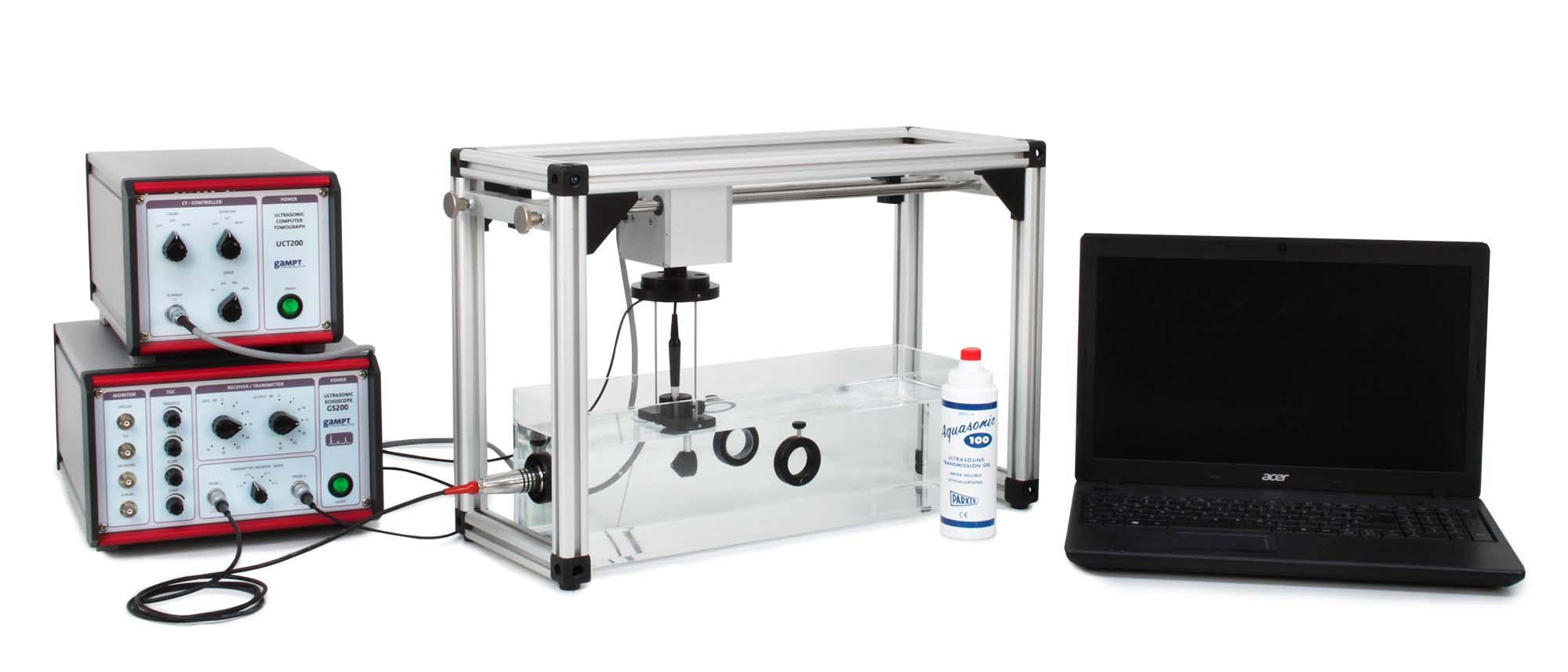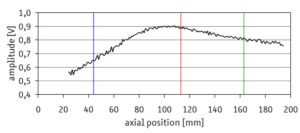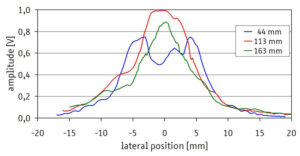Article No. VK-PHY10
PHY10 Characteristics of Sound Field
Investigation of the sound field of an ultrasonic probe in water using a hydrophone
- Subject matter of the experiment
- Theoretical and practical aspects of the experiment
- Results
- Equipment
- Related Experiments
In this experiment the sound field of an ultrasonic probe in water is investigated by determining the sound pressure distribution in the axial and lateral direction by means of a hydrophone and characteristic sound field quantities are discussed.
Keywords: Sound field, near field, far field, focus zone, sound pressure, sound pressure distribution, sound velocity, sound intensit
The area in a medium in which sound waves are propagating is called the sound field. It possesses a certain geometry dependent on the material and the sound generation and/or sound coupling, decisively limits the lateral resolution power of an ultrasonic probe and can influence sound attenuation. The sound field can be described by sound field quantities such as sound pressure and sound particle velocity or sound energy quantities such as sound energy and sound intensity. By means of a hydrophone, the sound field in a liquid can be investigated by determining the sound pressure amplitude along and perpendicular to the sound field axis. Characteristic features such as near field length and sound field width can be derived from the amplitude distribution.
A theoretical near field length of 85 mm results for a 2 MHz probe (16 mm diameter) in water (c = 1497 m/s, T = 25 °C). The hydrophone measurement along the sound field axis (top diagram) shows a maximum set back slightly at approx. 100 mm. The measurements of the lateral sound field distribution in different probe intervals (bottom diagram) show a local modulation of the signal amplitude in the area of the near field.
| Ord.no. | Description |
|---|---|
| 10400 | Ultrasonic echoscope GS200 |
| 10152 | Ultrasonic probe 2 MHz |
| 10450 | Hydrophone |
| 60200 | CT scanner |
| 60210 | CT control unit |
| 60120 | CT reservoir |
| 60123 | Hydrophone support |
| 70200 | Ultrasonic gel |


